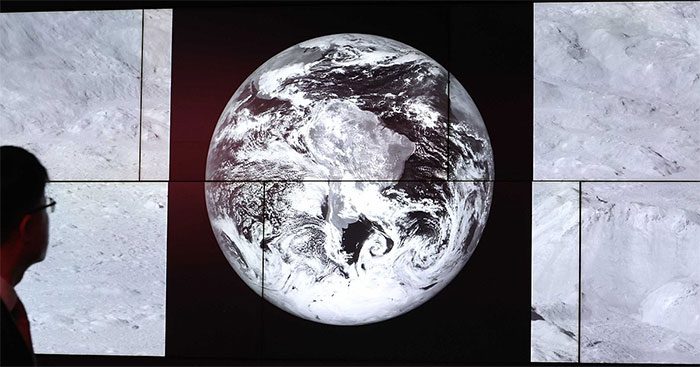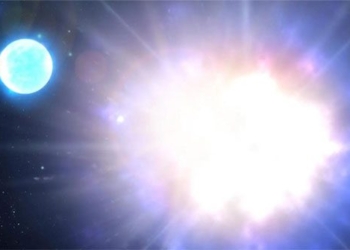Over the past two decades, studies of the Moon have revealed its rich array of resources on this natural satellite of Earth.
Some locations on the Moon are suitable for establishing bases and facilities that will be protected from cosmic radiation thanks to protruding rock formations. The deep craters at the poles of the Moon also contain ice – a valuable resource of water, oxygen, and hydrogen. Other craters are located near high mountain ridges, which can receive sunlight year-round, making them crucial for harnessing solar energy. Notably, the Moon is also rich in other valuable resources such as titanium, aluminum, helium-3, precious metals, and rare earth elements.

Image of the Moon taken by South Korea’s Danuri unmanned spacecraft, displayed at an exhibition in Seoul on December 26, 2023. (Photo: Yonhap/TTXVN).
The Moon’s abundant potential has become a “sweet spot” for space agencies and private companies. They are planning to build bases on the Moon, conduct scientific experiments, and mine resources. The Moon’s surface area is three times that of Antarctica, so overcrowding is not a primary concern. However, only a few areas on the Moon’s surface are suitable for conducting scientific experiments, which are expected to attract many missions and other activities.
Researchers aim to protect scientifically significant sites (SESI) on the Moon’s surface. The immediate task is to classify which locations require specific forms of protection. Scientist Alanna Krolikowski at the Missouri University of Science and Technology (USA) notes: “Scientists need to carefully consider the fact that scientific assets are at risk and should proactively categorize them as needing protection.”
Alanna Krolikowski is a co-author of a study on SESI published by the Royal Society on March 25. The research emphasizes the need for a multi-faceted approach to protect SESI. Additionally, government space policies must include provisions for SESI protection. This is the most pressing issue for countries planning missions to the Moon.
According to reports, there are currently two major international efforts to establish regulations for activities on the Moon, but the protection of SESI has not been adequately addressed.
The first is the Artemis Accords between the United States and partner countries in the Artemis Moon exploration program. According to the agreement, there are specific safe zones around installed equipment. However, the Artemis Accords allow private companies to mine the Moon for profit.
The second is the United Nations Committee on the Peaceful Uses of Outer Space’s efforts to manage lunar activities. This committee’s new working group is considering regulations for the extraction of natural resources on the Moon and is expected to pay attention to SESI.





















































